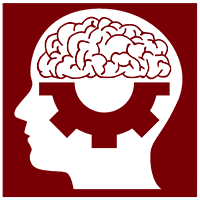
Early in the spring of 2018, MIT launched the MIT Quest for Intelligence to advance the science and engineering of both human and machine intelligence. This Institute-wide initiative “seeks to discover the foundations of human intelligence and drive the development of technological tools that can positively influence virtually every aspect of society.” At the MIT Quest Launch event on March 1, 2018, several CBMM faculty described their vision of this Quest for Intelligence, highlighting synergies with the scientific mission of the Center.
James DiCarlo, Head of the Department of Brain and Cognitive Sciences, describes how studies of the brain and cognitive sciences, merged with the creation of engineered systems, enable a deeper understanding of human intelligence. Tomaso Poggio, Director of CBMM, notes how recent AI successes, such as the AlphaGo system and Mobileye driving assistance technology, have roots in neuroscience, and describes research of the Center on visual intelligence and theoretical aspects of deep learning networks that enable their success.
A key to understanding general human intelligence is to explore how it develops in infants and young children. Laura Schulz, Professor of Cognitive Science, highlights many astounding capabilities of young children as sophisticated, abstract learners. Rebecca Saxe, Professor of Cognitive Neuroscience, describes her pioneering work on probing the neural basis of the development of social intelligence in infants, using methods such as fMRI and near-infrared spectroscopy. Finally, Joshua Tenenbaum, Professor of Computational Cognitive Science, elucidates key aspects of how the learning process in young children can be modelled, drawing on a probabilistic programming framework, in order to build common sense reasoning about the physics of the world and psychology of agents and their interactions, both of which are essential to creating machines with the flexible, general intelligence of humans.
Videos:
- James DiCarlo, The future of intelligence science (10:02)
- Tomaso Poggio, The science and engineering of intelligence (13:09)
- Laura Schulz, Thinking big by starting small (10:07)
- Rebecca Saxe, Building a social brain (7:19)
- Joshua Tenenbaum, Scaling AI the human way (12:14)
Additional Resources:
- View presentations by other MIT researchers at the MIT Quest Launch website
- Learn more about the MIT Quest for Intelligence

